-
Resources on disaster preparedness, resilience
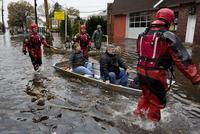
One year after Superstorm Sandy hit the eastern United States, local, state, and federal agencies as well as community groups and businesses are working to strengthen the U.S.s resilience to future disasters. A National Research Council (NRC) has issues a series of studies and reports, and has put together workshops and study groups, which should advance the national conversation on preparedness and resilience.
-
-
Rising temperatures threaten Salt Lake City’s water supply
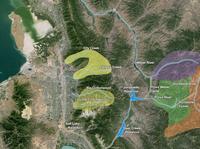
In an example of the challenges water-strapped Western cities will face in a warming world, new research shows that every degree Fahrenheit of warming in the Salt Lake City region could mean a 1.8 to 6.5 percent drop in the annual flow of streams that provide water to the city. By midcentury, warming Western temperatures may mean that some of the creeks and streams that help slake Salt Lake City’s thirst will dry up several weeks earlier in the summer and fall.
-
-
2012 sees slowdown in the increase in global CO2 emissions
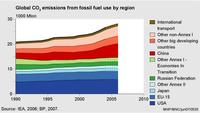
Actual global emissions of carbon dioxide (CO2) reached a new record of 34.5 billion tons in 2012. Yet, the increase in global CO2 emissions in that year slowed down to 1.1 percent, which was less than half the average annual increase of 2.9 percent over the last decade. This is remarkable, as the global economy grew by 3.5 percent. This development signals a shift toward less fossil-fuel-intensive activities, more use of renewable energy, and increased energy saving. Increases in fossil-fuel consumption in 2012 were 2.2 percent for natural gas, 0.9 percent for oil products, and 0.6 percent for coal.
-
-
Improving earthquake early warning systems
Earthquake early warning systems may provide the public with crucial seconds to prepare for severe shaking. For California, a new study suggests upgrading current technology and relocating some seismic stations would improve the warning time, particularly in areas poorly served by the existing network — south of San Francisco Bay Area to north Los Angeles and north of the San Francisco Bay Area.
-
-
Best way to stop a killer asteroid? Form a committee
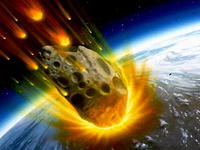
The United Nations (UN) has adopted several recommendations of a new asteroid defense plan, the first steps in preventing Earth from being struck by an asteroid. The recommendations were a response to an asteroid strike earlier this year in Chelyabinsk, Russia. This object injured thousands and was around seventeen meters across. We have only found 1 percent of these “killer” asteroids, meaning there are hundreds of times more out there than we know of. One of them, sooner or later, will have our name written on it. For a global threat we need a global response, as well as a global share of the blame if it goes wrong.
-
-
Warming will disturb nutrients balance in drylands, affecting food production
Drylands cover about 41 percent of Earth’s land surface and support more than 38 percent of the world’s population. As the world’s population grows, people will increasingly rely on marginal lands — particularly drylands — for production of food, wood and biofuels. Trouble is, an increase in aridity due to global warming will disturb the balance of nutrients in the soil and reduce productivity of the world’s drylands, a landmark study predicts. Increasing aridity is associated with a reduction in carbon and nitrogen in the soil and an increase in phosphorus.
-
-
Melting Arctic sea ice increases summer rainfall in northwest Europe
A new study offers an explanation for the extraordinary run of wet summers experienced by Britain and northwest Europe between 2007 and 2012. The study found that loss of Arctic sea ice shifts the jet stream further south than normal resulting in increased rain during the summer in northwest Europe. The annual average extent of Arctic sea ice is currently declining at about half a million square kilometers per decade — equivalent to about twice the area of the United Kingdom.
-
-
Helping first responders identify chemical, biological, and radiological agents
The U.S. Naval Research Laboratory (NRL) has expanded the reach and capabilities of its rapid urban plume modeling and hazard assessment system, CT-Analyst, by providing a commercial license to Valencia, California-based Safe Environment Engineering (SEE) for the fields of use of public safety, industrial safety and monitoring, and environmental monitoring. CT Analyst is a tool designed to provide first responders with fast and accurate predictions of chemical, biological, and radiological agent airborne transport in urban environments. CT Analyst will be integrated into the existing product line of SEE’s Lifeline MultiMeterViewer software suite.
-
-
Arkansas deploys first statewide SmartPrepare system
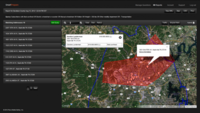
Arkansas uses citizen-supplied data for more efficient emergency planning and response. The service allows citizens to create secure profiles online which contain vital details about their household. Public safety officials can use the data to gain greater insight into their communities and identify potential challenges in order to prepare more effectively for disasters, allocate resources, and expedite emergency response and recovery efforts during events.
-
-
Peru reopens UFO investigation office
The Peruvian air force, saying it was responding to an “increased sightings of anomalous aerial phenomena” in the country’s skies,” has reopened its Departamento de Investigación de Fenómenos Aéreos Anómalos (DIFAA). The investigative office was established in 2001 but closed in 2008. DIFAA will bring together sociologists, archaeologists, astronomers, meteorologists, and air force personnel to analyze these anomalous events. Peru is not the only Latin American country showing renewed interest in UFOs.
-
-
Sharp increase in radioactive water leaks at Fukushima
Tokyo Electric Power(TEPCO) has reported a rise in groundwater radiation levels, saying a tank at the firm’s Fukushima plant leaked 300 metric tons of toxic water in August 2013. Water samples from wells, taken in mid-October, show a record-high concentration of beta-ray emitting substances, and a sharp increase in the presence of radioactive tritium. Japanese prime ministerShinzo Abe, in a tacit admission that Japan cannot effectively handle the continuing radiation leaks from the stricken plant, said Japan would be interested in receiving foreign help to contain widening radioactive water leaks at Fukushima.
-
-
Dolphin-inspired radar system detects hidden surveillance, explosive devices

Scientists, inspired by the way dolphins hunt using bubble nets, have developed a new kind of radar that can detect hidden surveillance equipment and explosives. The twin inverted pulse radar (TWIPR) is able to distinguish true targets, such as certain types of electronic circuits that may be used in explosive or espionage devices, from clutter (for example, other metallic items like pipes, drinks cans, or nails) which may be mistaken for a genuine target by traditional radar and metal detectors.
-
-
New method to help coastal communities adapt to sea-level rise
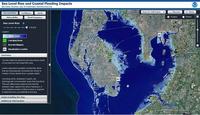
Future sea-level rise seems inevitable, although the rates and geographical patterns of change remain uncertain. Given the large and growing populations and economic activity in coastal zones, as well as the importance of coastal ecosystems, the potential impacts of sea-level change are far-reaching. Current methods to assess the potential impact of sea-level rise have varied significantly and hindered the development of useful scenarios and, in turn, suitable adaption policies and planning.
-
-
$32 million NSF grants for improving prediction of, response to natural disasters
With Sandy’s one-year anniversary – 29 October – next week, how do scientists better predict and respond to natural hazards such as hurricanes, tornadoes, floods, earthquakes, tsunamis, and wildfires? To find answers, the National Science Foundation (NSF) recently awarded twelve new research grants totaling $32 million. The awards will advance understanding of natural hazards and of technological hazards linked with natural phenomena, as scientists study ways of predicting and responding to hurricanes, tornadoes, floods, earthquakes, tsunamis, wildfires.
-
-
Quake-triggered landslides a significant hazard for Seattle
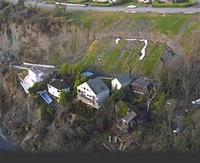
Seattle is prone to strong shaking as it sits atop the Seattle Basin — a deep sedimentary basin that amplifies ground motion and generates strong seismic waves that tend to increase the duration of the shaking. A new study suggests the next big quake on the Seattle fault may cause devastating damage from landslides, greater than previously thought and beyond the areas currently defined as prone to landslides.
-
More headlines
The long view
The Surprising Reasons Floods and Other Disasters Are Deadlier at Night
It’s not just that it’s dark and people are asleep. Urban sprawl, confirmation bias, and other factors can play a role.
Why Flash Flood Warnings Will Continue to Go Unheeded
Experts say local education and community support are key to conveying risk.
